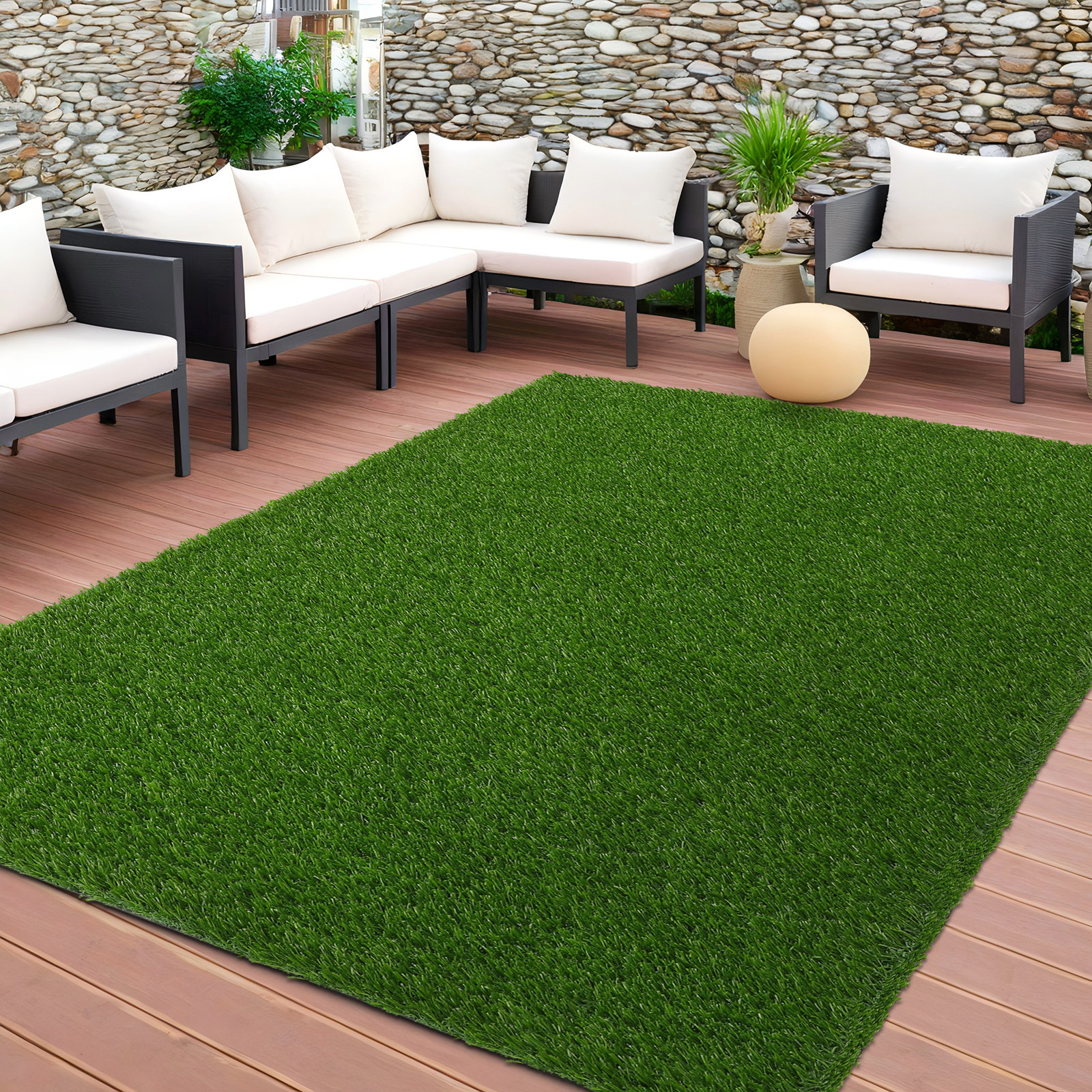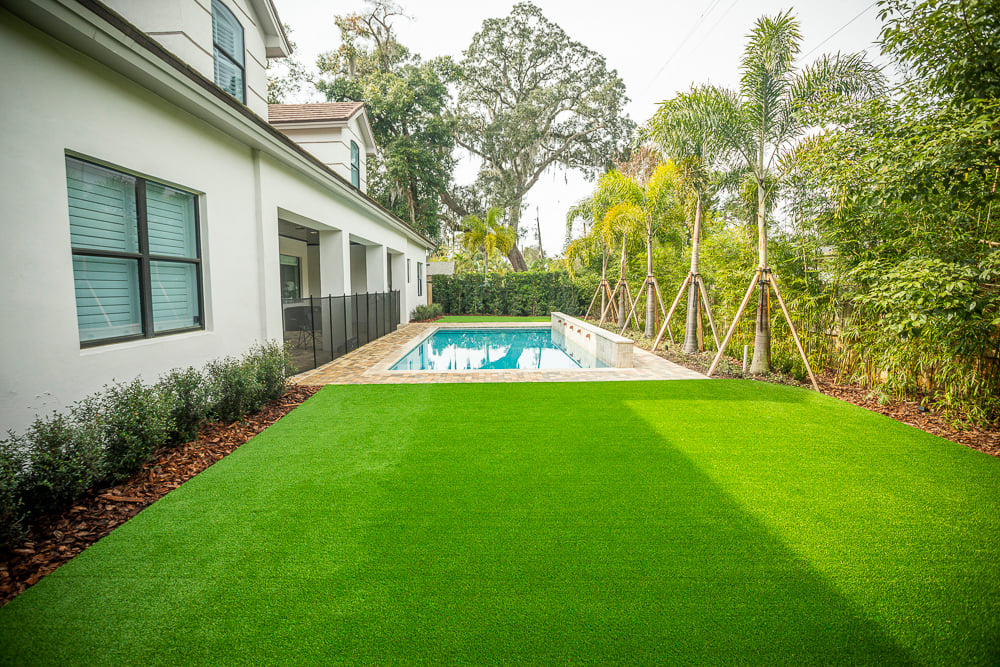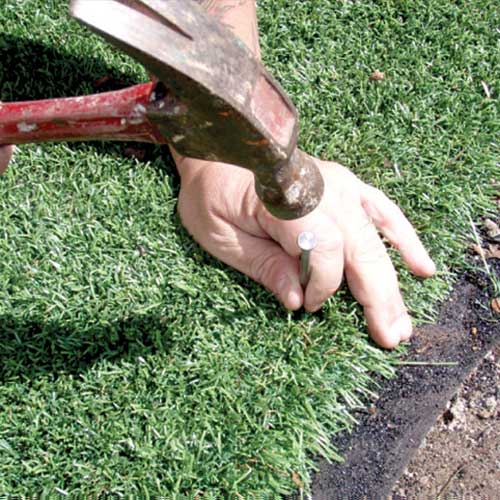Choose the Leading Turf Installation Phoenix AZ Solutions for Your Home or Business
Choose the Leading Turf Installation Phoenix AZ Solutions for Your Home or Business
Blog Article
Delve Into the Environmental Benefits of Opting for Artificial Lawn Solutions
The fostering of fabricated turf solutions presents an engaging opportunity to address pressing ecological challenges. By substantially minimizing water usage and lessening the application of harmful chemicals, these choices not just promote lasting landscape design however additionally secure local environments.
Water Conservation Advantages
Among the most considerable benefits of man-made lawn is its capacity to preserve water. Traditional turf yards require significant irrigation, specifically in locations prone to dry spell or water constraints. In contrast, synthetic grass does not need watering, substantially decreasing the general demand for water resources. This feature is specifically advantageous in dry areas where water shortage is a pushing concern.
By eliminating the demand for normal watering, synthetic grass adds to lasting landscape methods and aids alleviate the environmental effect of extreme water intake. The preservation of water prolongs to the decrease of drainage, which can lead to dirt erosion and river pollution.
In addition, the installment of synthetic grass permits house owners and communities to allocate water resources extra successfully, concentrating on necessary uses such as drinking water and farming. The change towards synthetic grass not just promotes liable water use but also aligns with more comprehensive environmental goals focused on preserving natural deposits.
As areas progressively focus on sustainability, the water conservation advantages of synthetic grass offer a compelling case for its fostering in industrial and household landscape design tasks.
Decreased Chemical Usage
The transition to synthetic turf substantially lowers the dependence on chemical therapies commonly used in all-natural grass maintenance. Traditional grass monitoring normally includes the application of pesticides, plant foods, and herbicides to advertise growth and control bugs. These chemicals can present risks to human wellness, regional wildlife, and the environment, adding to dirt and water contamination.
In comparison, synthetic lawn eliminates the need for these harmful compounds. When installed, it calls for minimal maintenance, primarily containing normal cleaning and occasional infill replenishment. This decrease in chemical use not only benefits the immediate setting yet also adds to broader eco-friendly stability. By decreasing the launch of artificial compounds right into the ecosystem, synthetic turf promotes healthier soil and water systems.
Additionally, the absence of chemical runoff connected with man-made lawn installations assists secure neighborhood rivers from pollution, sustaining water life and maintaining biodiversity. Phoenix turf companies. As neighborhoods progressively prioritize sustainable practices, selecting synthetic grass provides a practical solution that lines up with environmental preservation goals. Through this shift, residential or commercial property proprietors can take pleasure in lush green spaces without compromising eco-friendly health and wellness, leading the method for a much more lasting future
Lower Carbon Footprint

In addition, the installation of man-made turf can lead to significant water conservation. Natural lawns need considerable amounts of water for watering, which not just contributes to the carbon impact connected with water extraction and therapy yet likewise strains local water sources. On the other hand, synthetic grass requires minimal maintenance, requiring no watering, thus significantly decreasing water usage and its connected power expenses.
In addition, the longevity of fabricated lawn adds to its reduced carbon impact. With a lifespan of as much as 15 years or more, the requirement for regular replacements is diminished, causing less waste and reduced power usage in production and dealing with typical lawn choices. Generally, synthetic grass offers a lasting alternative for eco aware landscape design.
Habitat Preservation
Environment preservation is a crucial consideration in the argument over landscape design options, particularly when comparing synthetic grass to all-natural lawn. All-natural yard yards commonly call for considerable maintenance, consisting of making use of pesticides, herbicides, and plant foods, which can negatively impact regional ecosystems. These chemicals can seep into the soil and rivers, damaging indigenous plants and animals and interfering with local habitats.
Man-made grass removes the demand for hazardous chemicals, consequently shielding neighboring wild animals and preserving the stability of surrounding environments. The setup of synthetic grass can lead to the conversion of former grass locations right into more biodiverse landscapes, such as pollinator gardens or native plant locations, which can support local wildlife.
Inevitably, the change to synthetic grass not just saves water and decreases maintenance initiatives yet likewise cultivates a much more unified relationship in between human activities and the native environment, promoting environment preservation while doing so.
Long-Term Sustainability
Lasting sustainability is a crucial consider reviewing the benefits of synthetic lawn over standard grass yards. Among the most significant advantages of man-made grass is its resilience; it can last as much as 15-20 years with minimal upkeep, whereas all-natural yard calls for frequent reseeding and replacement. This long life minimizes the demand for constant resources, such as water, plant foods, and pesticides, which are crucial for preserving a healthy and balanced yard lawn.
In addition, synthetic grass adds to a decrease in carbon discharges connected with yard treatment equipment. Standard grass typically call for gas-powered lawn mowers, trimmers, and blowers, useful link every one of which add to air pollution. Arizona turf. In comparison, artificial grass removes the demand for such equipment, promoting a cleaner atmosphere
In addition, the manufacturing of synthetic grass significantly makes use of recycled products, boosting click reference its sustainability account. As manufacturers adopt green practices, the environmental footprint of synthetic grass proceeds to lessen.

Verdict
The adoption of synthetic grass solutions provides considerable ecological benefits, including considerable water preservation, decreased dependence on harmful chemicals, and a lower carbon impact. In addition, synthetic grass help in protecting natural habitats by minimizing land disturbance and advertising long-lasting sustainability with using durable materials. Collectively, these factors emphasize the capacity of synthetic lawn to add positively to ecological health and wellness and provide a practical choice to standard landscaping practices in a significantly resource-conscious world.
In contrast, artificial lawn does not require watering, substantially decreasing the overall demand for water sources. By decreasing the launch of artificial substances right into the ecological community, fabricated grass advertises much healthier soil and water systems.
In addition, the installment of synthetic grass can result in significant water conservation. In comparison, artificial lawn needs minimal upkeep, needing no watering, thus substantially decreasing water usage and its connected power costs.

Report this page